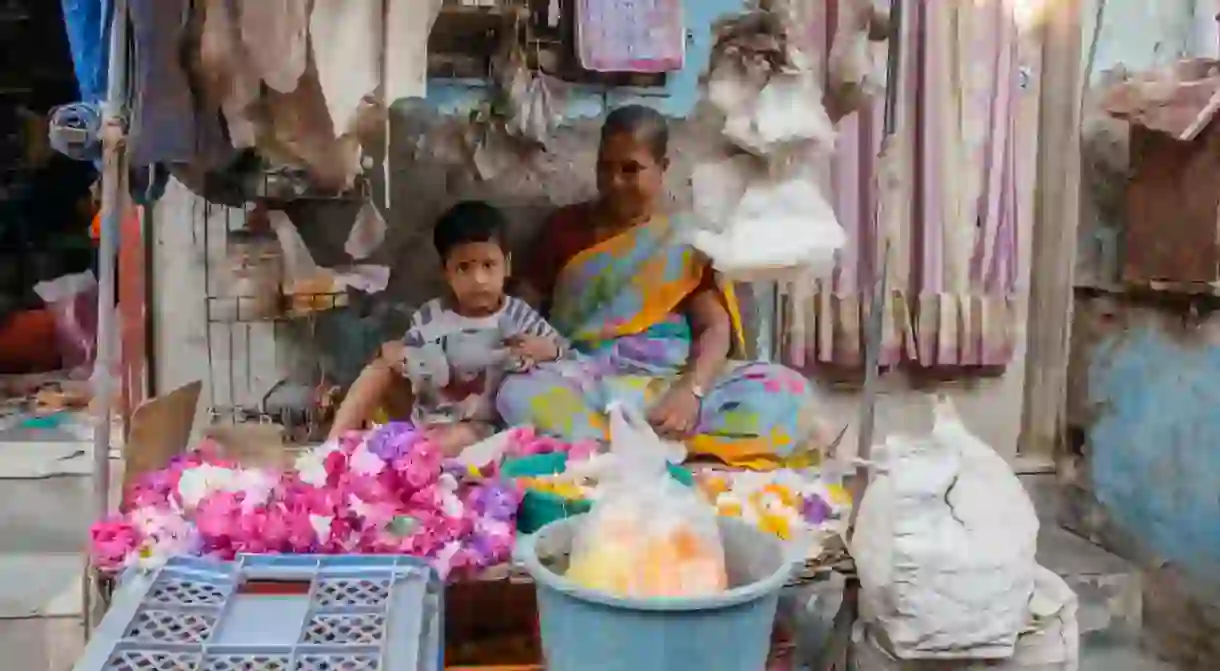Dharavi, India Is More Than Asia's Largest Slum

The Oxford dictionary defines a slum as “a squalid and overcrowded urban street or district inhabited by very poor people.”This definition creates such negative images of economically distressed individuals surviving due to the generosity of the richer sections of society. Along similar lines, the name Dharavi is commonly associated with being Asia’s largest slum (although that is not a fact), where an estimated one million people live on prime property in the heart of Mumbai in very unhygienic and difficult conditions. However, Dharavi isn’t merely the geographic heart of Mumbai; it is also the industrial heart of the financial capital of India.
History
In the 18th century, Dharavi was a marshy island with mangroves on the coast of the Mithi River. Perhaps due to the Maratha invasions on Salsette, John Horne, the governor of Bombay, commissioned the construction of the Riwa Fort in Dharavi in 1737 so as to protect the borders of Bombay. This fort is located opposite the Mahim Nature Park. Approximately a century later, Dharavi became a fishing village, during the period before the commercialization of the city. With the urbanization of Bombay by the British came the issue of scarcity of housing, water and sanitation facilities. Poor sanitation facilities were rampant, more so in the residential quarters of the natives. Such conditions led to the outbreak and spread of plague in 1869, killing nearly 200,000 in Mumbai. Worried about more epidemics, the British government expelled many polluting industries and Indian residents of Bombay to the then distant fishing village in the north, leading to the birth of Dharavi in 1882.


Life in Dharavi Today
Since its inception in 1882, this designated industrial township has now expanded to host a large portion of the commercial activities in Mumbai, to the tune of $1.6 billion. Although this number varies in different articles, it is safe to say that this is a hot spot for a variety of industries such as pottery, fried snacks, leather products, recycling units, handicraft, garments, embroidery, papad-making, foundries, restaurants, sweet-making, soap and detergent factories, bakeries, kite-making, etc. Each building unit in Dharavi is, therefore, an amalgamation of industries and housing for multiple families. Although spread across 550 acres, Dharavi has a population density of over 10 times the rest of the city. It is, therefore, a complex city within the larger city of Mumbai, with a number of small and medium industries, housing in unsanitary conditions, schools, and religious and community centers.



Dharavi has been the setting for many movies, the most famous being Danny Boyle’s Slumdog Millionaire. It is also a center for a number of innovative social projects such as the Dharavi Art Room Foundation and the Dharavi Diary project. Dharavi Art Room is an NGO that empowers children and women of marginalized communities through the medium of art. The Dharavi Diary program teaches coding to girls in Dharavi; some have become so good at it they have developed mobile apps to deal with problems in their communities and are now fondly called “Tech girls of Dharavi.” One such app is called Paani hai Jeevan (Water is Life), which creates an online queue for water collection that alerts people when it is their turn, thus, minimizing wait time.




Due to its centralized location, developing this 550-acre property is a highly profitable and attractive venture. However, the redevelopment plan of Dharavi has been faced with controversy and opposition since it will completely uproot the lives and livelihoods of the estimated one million residents. Moreover, improper planning during the redevelopment process can be a huge setback to the industries that supply a variety of products to the rest of the city, the country and, in some cases, to other countries. The redevelopment plan restarted again in early 2016, with geographic sector-wise bids being invited from developers. Should this plan reach fruition, the developers will have the responsibility to construct free tenements for eligible residents along with much-needed infrastructure facilities such as roads, water supply, sewerage, industrial settlements and hospitals. The developers have also been instructed to hold consultations with the residents so as to build a plan that mitigates the negative impact on their day-to-day lives.


To know more about Dharavi, one can read the book Behind the Beautiful Forevers by Katherine Boo, watch the documentary series Slumming It by Kevin McCloud or go on a guided walk through Dharavi and actually see some of the industries in action with Reality Tours and Travels.
















